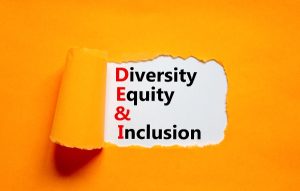
Diversity, equity, and inclusion are key focus areas of the Biden administration's President's Management Agenda (PMA). Additionally, the administration issued an executive order in June 2021 directing agencies across government to implement more diversity training, rethink the use of salary history as a basis for pay determinations, and supply gender non-conforming and nonbinary and transgender employees with credentials that reflect their current names, pictures and pronouns. Finally, in November 2021 the administration offered a strategic plan to help guide agencies in diversity efforts, asking for the submission of agency-specific Diversity, Equity, Inclusion, and Accessibility (DEIA) plans by March 2023.
Diversity Today
This focus is starting to show results. The Office of Personnel Management (OPM) released a first-ever report on the diversity of the federal workforce. It looked at hiring and retention across agencies and gave a snapshot of the administration's efforts to remove barriers for applicants from underrepresented communities. The report finds small but encouraging gains in racial diversity between 2017 and 2021 with Black employees rising from 18.15 percent to 18.19 percent of the federal workforce. Latinx made a much larger jump rising from 8.75 percent to 9.95 percent. Women's representation grew from 43.38 percent of the workforce in 2017 to 44.44 percent in 2021. Future reporting will look at nonbinary workers.
The 2022 Federal Employees Viewpoint Survey (FEVS) included, for the first time, an index to show how employees feel about the federal government's work to advance diversity. It found that 69 percent of respondents reported positive perceptions of their agency's DEIA-related practices. Employees were most impressed with inclusion efforts while equity showed the lowest positive perception. While showing positive momentum, it's clear there is still much to do to ensure the federal workforce more closely reflects the American population.
Leaders Needed to Chart a Diverse Future
The DEIA executive order did not require the appointment of a Chief Diversity Officer (CDO) or equivalent, but OPM issued a letter in January strongly encouraging all agencies to add a CDO. This position is designed to be separate and distinct from equal employment opportunity officers but be on equal footing to have the authority to close gaps in diversity goals and metrics as well as provide accountability for meeting DEIA goals.
Many agencies already have CDOs, and last September the Office of Personnel Management (OPM) launched a council of chief diversity officers across federal agencies. The group has been tasked with setting government goals and benchmarks for diversity, equity, and inclusion, as well as identifying obstacles that might keep some populations from applying for jobs. The council is looking beyond just a compliant process, but rather working to foster "community engagement [and] a sense of belonging, making sure that people have access to, say, accommodations that they need, to ensure that they can do their job with efficiency."
OPM also organized the first-ever DEIA Summit which focused largely on accessibility, as well as employment of people with disabilities. President Barack Obama issued an executive order in 2010 stating that the federal government should become a model for employing people with disabilities. It set a goal of hiring 100,000 more people with disabilities into the federal government over five years. That goal was exceeded by 2015, but today difficulties with retention are an issue as people with disabilities working for the government are three times more likely than their non-disabled colleagues to quit.
As agencies work to meet diversity, equity, and inclusion goals, GovEvents and GovWhitePapers provide a host of resources on best practices in recruiting, hiring, and retention.
- 2023 Federal IT Career Workshop (April 25, 2023; Washington, DC) - This event will teach attendees how to open doors to positions with varied growth paths, mobility across agencies, and widely diverse roles. It is designed to help people navigate a path through a career in government.
- NICE Conference & Expo: Resetting Expectations (June 5-7, 2023; Seattle, WA) - Leaders from education, government, industry, and nonprofits explore ways of developing a skilled cybersecurity workforce ready to meet the challenges of the future.
- The Diana Initiative (August 7, 2023; Las Vegas, NV) - A conference committed to helping all those underrepresented in Information Security with a focus to create a more inclusive information security industry. The Diana Initiative features multiple speaker tracks and villages with hands-on activities.
- Federal Hiring of Persons with Disabilities (white paper) - This report provides an overview of the federal hiring authorities and processes that pertain to persons with disabilities. It also examines available data and statistics on federal hiring of persons with disabilities over time and discusses potential options for congressional oversight and legislation.
- 3 Keys to Building a Workforce that Works (white paper) - Today's job seekers are looking for more than a salary and benefits. They are in pursuit of an environment where they feel heard and are shown they are valued. In the vein of being valued, they expect flexibility in work location and schedule. This report examines three key areas of focus for organizations looking to become an employer of choice for current and future talent.
For more insight on diversity in the federal government visit GovEvents and GovWhitePapers.



